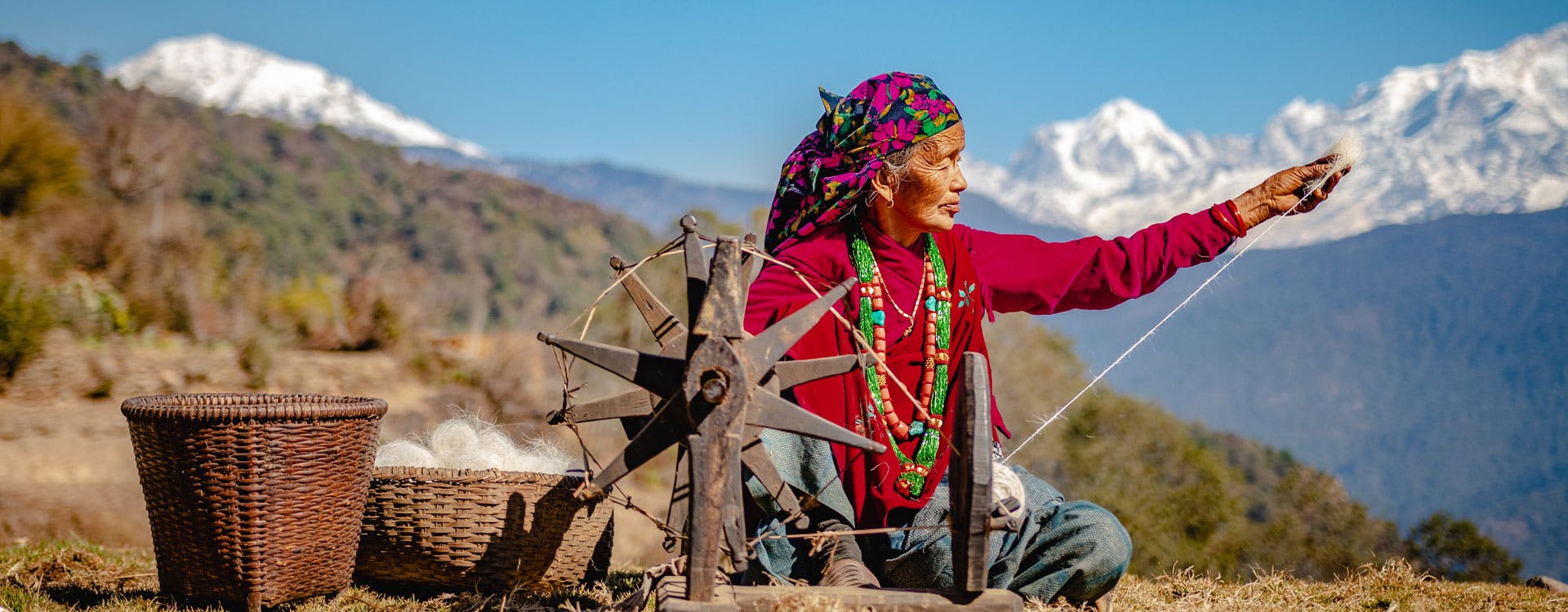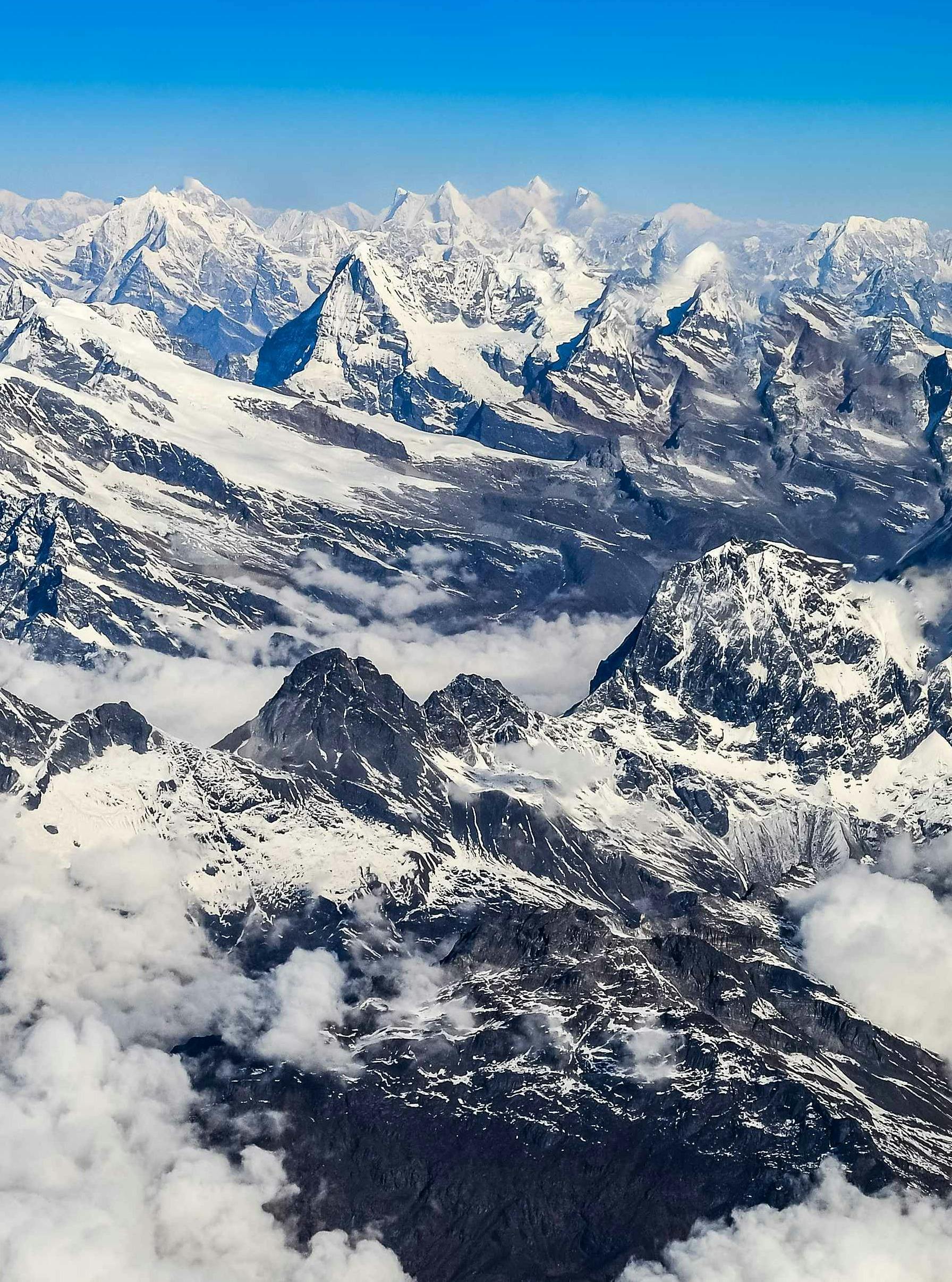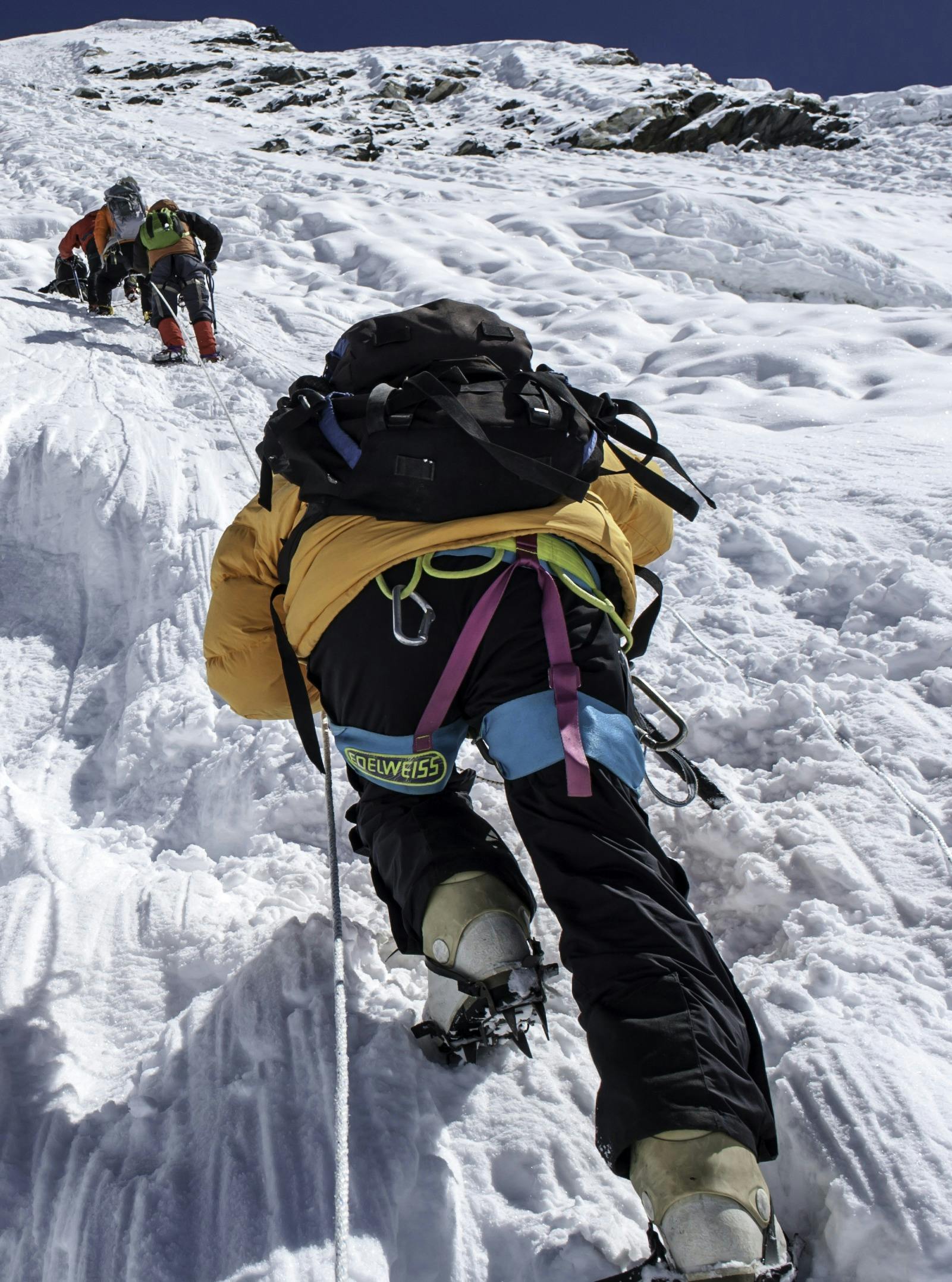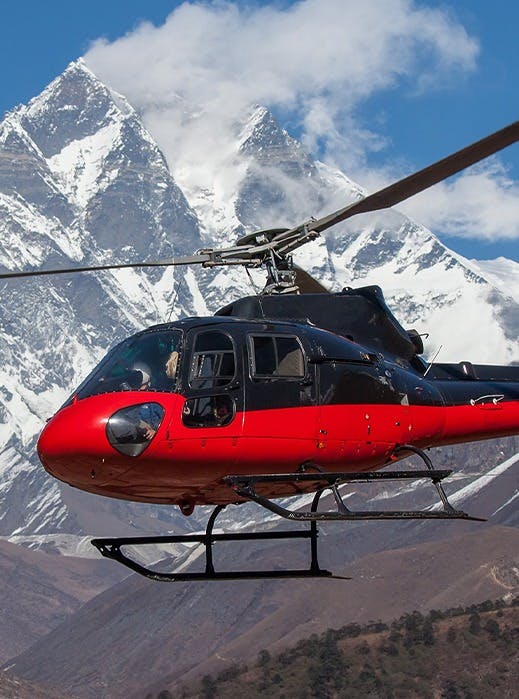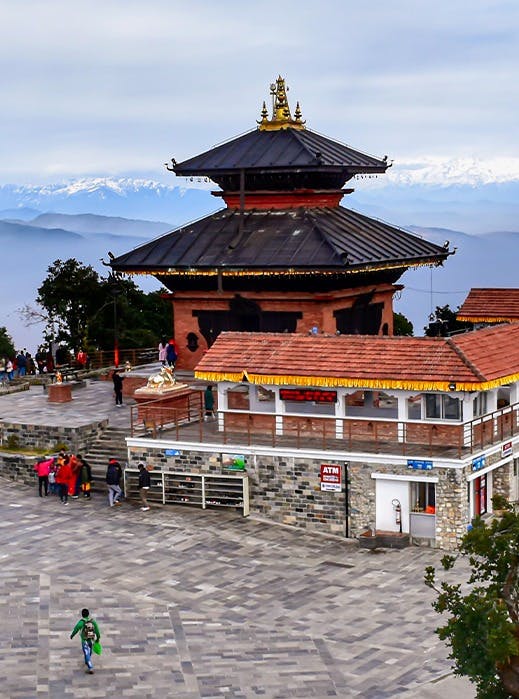"Discover the Wonders of Nepal: A Hidden Gem in Southern Asia"
There is a sense of magic and mystery in the air in Nepal, a feeling that anything is possible and that dreams can come true. It is a place where adventure awaits at every turn, from trekking to the base camp of Mount Everest, Annapurna to rafting down wild rivers and exploring ancient temples.
Nepal is not just a place of natural wonder. It is a place of rich cultural heritage, where ancient traditions and customs are still preserved with pride. The friendly people of Nepal are known for their warm hospitality and welcoming spirit, making visitors feel at home from the moment they arrive.
Nepal is a place of heart and soul. It is a place that touches the heart and nourishes the soul, leaving visitors forever changed. It is a place that inspires and uplifts, a place that beckons you to return time and time again.
The breathtaking landscapes of Nepal, from the majestic peaks of the Himalayas to lush green valleys and serene lakes, offer unparalleled opportunities for adventure enthusiasts, with activities such as trekking, mountaineering, and river rafting attracting thrill-seekers from around the world, making Nepal a must-visit destination for those seeking unforgettable experiences in nature's embrace.
Nepal: Key Facts
Location: Nepal is located between India and China in Southeast Asia, with part of the country lying in the Great Himalayan Range and the Indo-Gangetic Plain.
Geography: Nepal has diverse geography including fertile plains, subalpine forested hills, and some of the world's tallest mountains, including Mt. Everest (8848m). The country also boasts famous natural landmarks like the Kali Gandaki Gorge.
Capital: Kathmandu is the capital of Nepal, rich in temples and cultural artifacts recognized by UNESCO as world heritage sites.
Area: Nepal covers 0.3% of Asia and 0.03% of the world, with an area of 147,181 sq. km.
Population: According to the 2011 census, Nepal has a population of 31 million.
Political System: Nepal is a federal parliamentary republic, divided into 7 provinces.
Major Religion: 81.3% of Nepalis follow Hinduism, followed by 9% Buddhist, 4.4% Islam, and 3% Kirant.
Time Zone: Nepal follows UTC+05:45 (Nepal Standard Time).
Official Language: Nepali is the official language in 6 of the provinces, and Maithili and Bhojpuri are the official languages in Province 1.
Working Hours: Government offices have working hours from 10 am to 5 pm, with Saturday as the day off.
Electricity: Nepal Electricity Authority (NEA) is the authorized distributor of electricity in Nepal, with 230V as the standard voltage.
Visa Requirements for Nepal: How to Obtain a Tourist Visa
If you're planning a trip to Nepal, it's important to know that a tourist visa is required for entry. Fortunately, obtaining one is relatively easy. You can apply for the On arrival Tourist Visa upon your arrival at any of the air or land entry points in Nepal. Alternatively, you can also obtain a visa from Nepali Diplomatic Missions located abroad.
The tourist visa is valid for up to 3 months and offers multiple re-entry facilities, making it perfect for travelers who plan to explore different regions of Nepal. You can choose from three different visa durations: 15, 30, and 90 days. The cost of the visa varies depending on the duration, with prices set at USD 30, USD 50, and USD 125, respectively.
For more detailed information on obtaining your tourist visa, we recommend visiting the official website of the Department of Immigration. Their Tourist Visa section provides helpful resources and answers to frequently asked questions. Make sure to plan ahead and obtain your visa before you embark on your Nepalese adventure.
Getting to Nepal: Transportation Options for Travelers
The Tribhuvan International Airport is the only entry and exit point by air in Nepal, serving as the sole international airport in the country. This is the most common way to enter Nepal, with many airlines offering flights to and from various destinations worldwide.
If you prefer overland travel, you can choose to enter Nepal through either India or China. There are six land entry/exit points located at the Nepal-India border and two entry/exit points at the Nepal-China border. Traveling by land offers a unique experience, with stunning scenery and opportunities to explore different parts of Nepal and neighboring countries.
Be sure to plan ahead and make necessary arrangements for better and smooth journey to nepal. Check for the latest travel requirements and restrictions, and be prepared with the necessary documents and visas. Nepal is a destination not to be missed with its diverse culture, rich history, and breathtaking landscapes,
Top Tourist Destinations in Nepal: Must-Visit Places for Travelers
Nepal is a country full of natural beauty and cultural treasures, with a wide range of destinations to suit any traveler's interests. Whether you're an adventure seeker or a culture enthusiast, there is something for everyone in Nepal.
For trekkers and hikers, the Everest, Annapurna, Langtang, Mustang, Dolpo, and Manaslu regions are popular destinations for trekking and mountaineering. These areas offer stunning views of the Himalayan mountains, with challenging trails and high-altitude passes for the more experienced hikers.
If you're interested in cultural artifacts and temples, Kathmandu, Bhaktapur, and Lalitpur are must-visit destinations. These cities are home to many UNESCO World Heritage Sites, including ancient temples, stupas, and palaces. You can explore the history and traditions of Nepal while admiring the intricate architecture and artwork.
For those looking for a more relaxed trip, Pokhara, Lumbini, Chitwan, Bandipur, and Ilam are popular destinations for tours. These areas offer opportunities for leisurely walks, scenic views, and cultural experiences. In Pokhara, you can also enjoy adventure sports such as paragliding, bungee jumping, and zip-lining, while the Mustang region is perfect for off-road jeep tours and horseback riding.
With so many destinations to choose from, Nepal truly has something for everyone. Whether you're seeking adventure, culture, or relaxation, a trip to Nepal is sure to be an unforgettable experience.
Local Currency and Foreign Exchange in Nepal: What You Need to Know
If you're planning a trip to Nepal, it's important to know about the local currency and foreign exchange options available. The official currency of Nepal is the Nepalese Rupee (NRs.), which is available in both banknotes and coins. Banknotes of 1, 2, 5, 10, 20, 50, 100, 500, and 1000 denominations are in circulation, while coins of 1 and 2 are widely used.
Foreign exchange rates apply as per the open market exchange rate, and currency exchange can be carried out in any bank. However, it's important to be careful when exchanging currency at counters and authorized bodies around the country. It's recommended to keep up-to-date with the latest exchange rates, which can be found on the official website of the Nepal Rastra Bank.
It's also a good idea to carry some cash in Nepalese Rupees when traveling in Nepal, as many smaller establishments may not accept credit or debit cards. ATMs are widely available in major cities and towns, but it's best to check with your bank beforehand to ensure your card will work in Nepal.
In conclusion, make sure to have enough local currency for your trip and keep up-to-date with exchange rates to avoid any surprises. With a little preparation, you can enjoy your travels in Nepal with ease.
Weather and Climate in Nepal: What You Need to Know
Nepal is a country with diverse topography and as a result, it has five climatic zones: tropical and subtropical, temperate, cold, subarctic, and arctic zones, all correlating to the altitudes they are found in. Each of these climatic zones offers a unique range of climate, vegetation, and wildlife. The weather in Nepal is influenced by the five seasons: summer/monsoon, autumn, winter, and spring.
Summer/Monsoon season in Nepal brings in heavy rainfall and hot weather. This season lasts from June to August, and the temperatures can range from 25°C to 35°C in the lowlands. Autumn season, lasting from September to November, offers moderate weather which is considered the best time for traveling. The temperatures can range from 10°C to 27°C in the lowlands.
Winter season in Nepal brings in cold weather, with temperatures ranging from 2°C to 10°C in the lowlands. This season lasts from December to February, and it's a great time to visit the high-altitude regions for activities like skiing and snowboarding. Spring season in Nepal lasts from March to May and is known for its vibrant flora across the country. Temperatures can range from 10°C to 28°C in the lowlands.
It's important to note that weather patterns can be unpredictable in Nepal, especially in the high-altitude regions. It's recommended to keep an eye on the weather forecast and pack accordingly. In conclusion, Nepal offers a diverse range of climate and weather, and visitors can enjoy the country throughout the year depending on their interests and activities.
Nepal: A Place of Diverse Culture, People and Festivals
Nepal is home to a diverse culture, with people from all kinds of cultural and religious backgrounds residing in the country. The culture across Nepal is influenced by the Tibetan culture in the north and Indian culture in the south, which creates a unique blend of traditions and practices. Nepal is also home to many ethnic communities, each with their own unique culture and traditions.
The people of Nepal are known for their warm hospitality and friendly nature. They welcome visitors with open arms and are always ready to help. The Nepalese are proud of their cultural heritage, and they enjoy sharing their traditions with visitors. Visitors can experience the Nepalese culture through their food, music, dance, and festivals.
Speaking of festivals, Nepal is known for its diverse range of festivals that are celebrated throughout the year. Some of the major festivals in Nepal include Dashain, Tihar, Chhath, Lhosar, Eid, Christmas, and many more. These festivals are an integral part of Nepalese culture and are celebrated with great enthusiasm and fervor. Visitors can witness the vibrant colors, music, and dance that accompany these festivals, and get a taste of the Nepalese culture.
In conclusion, Nepal is a place of diverse culture, people, and festivals. Visitors can experience the unique blend of Tibetan and Indian culture, as well as the traditions of the various ethnic communities in the country. The Nepalese people are warm and welcoming, and visitors can immerse themselves in the vibrant festivals that are celebrated throughout the year.
Health and Safety Tips for Travelers to Nepal
Nepal is a safe and welcoming country for travelers, but like any other country, it's important to take necessary precautions to ensure your health and safety during your trip. Here are some tips to keep in mind:
Get Vaccinated: Before traveling to Nepal, it is recommended to get vaccinated for common diseases like hepatitis A and B, typhoid, and yellow fever. Talk to your doctor or visit a travel health clinic for advice.
Drink Bottled Water: It is advisable to drink only bottled water during your trip to Nepal to avoid the risk of water-borne diseases. Avoid tap water and ice in drinks, and be careful with fruits and vegetables that may have been washed in tap water.
Take Altitude Sickness Seriously: Nepal is home to some of the highest peaks in the world, and altitude sickness can be a serious concern. Make sure to take adequate time to acclimatize to the altitude, stay hydrated, and avoid alcohol and smoking. If you experience symptoms like headache, nausea, or dizziness, seek medical attention immediately.
Be Aware of Your Surroundings: While Nepal is generally a safe country for tourists, it is important to be aware of your surroundings and keep an eye on your belongings. Avoid walking alone at night, and be cautious of pickpockets and scams.
Follow Local Customs: Nepal is a culturally diverse country with a rich history and traditions. Be respectful of local customs and dress modestly, especially when visiting temples and religious sites.
In conclusion, with proper precautions, Nepal can be a safe and enjoyable destination for travelers. By following these tips, you can help ensure your health and safety during your visit to this beautiful country

